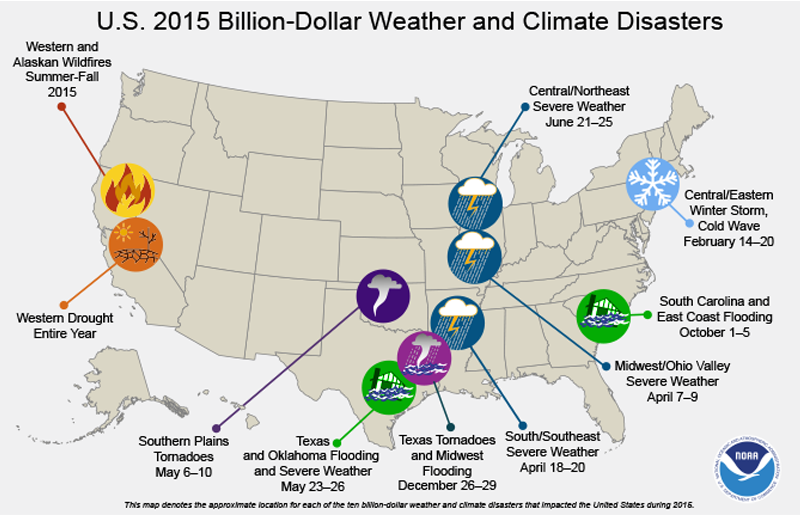It’s official: On average, 2015 was the second warmest year on record. In fact, every state in the United States experienced above-average annual temperatures last year, marking the 19th consecutive year in which average annual temperatures were higher than those of the 20th century.
The annual average temperature this year was 54.4°F—just shy of 55.3°F, the average for 2012, the warmest year on record, according to National Oceanic and Atmospheric Administration’s National Centers for Environmental Information annual summary. Several states, including Montana, Washington, Oregon, and Florida all experienced their warmest years since 1895, the year in which record-keeping for temperature and precipitation began.
Several notable records were also broken specifically in December, according to the NOAA. For one, last month was the warmest December on record, with an average temperature of 38.6°F, roughly 6.0°F above the 20th-century average. Most of the central and eastern U.S.—29 states total—also experienced their warmest recorded Decembers.
Although roughly 19 percent of the country remained in drought by the end of 2015, this December was still the wettest on record, and drought conditions improved throughout the Pacific Northwest, Central Plains, and Upper Midwest. Both Oklahoma and Texas experienced their wettest recorded years, putting an end to the drought that began in 2010.

There were also 10 notable natural disasters in 2015—their losses totaling some $1 billion each. In February, during a record-breaking cold snap, Boston received up to 40 inches of snow in a single week. In October, South Carolina experienced “catastrophic flooding“—as much as 18 inches of rain fell in one day throughout parts of the state. More recently, December became one of the deadliest months of 2015, after a low pressure weather system moved across the central U.S., killing at least 50 people—the most casualties caused by any weather-related event that year.

December’s intense storm system also caused a weeklong string of deadly tornadoes throughout states including Mississippi, Tennessee, and Texas, the likes of which haven’t occurred since a 1982 El Niño. (One tornado was strong enough to rip the carpet off the floor of a Memphis home.) On December 26, nine tornadoes ripped across 13 miles in two Texas counties, including an EF-4 with winds up to 180 miles per hour.
The same low-pressure weather system also led to historic flooding along the banks of the Mississippi, affecting some 600 miles across Illinois, Missouri, and Oklahoma. In the St. Louis area alone, floodwaters damaged or destroyed more than 7,000 structures, according to reports, and caused damage upwards of $200 million.
It is likely that the U.S. will continue to experience unusual, erratic, or severe weather patterns well into 2016: This year’s record-breaking El Niño is expected to extend through the spring of this year, and forecasters caution that we still haven’t experienced the brunt of it yet.

“Catastrophic Consequences of Climate Change” is Pacific Standard‘s year-long investigation into the devastating effects of climate change—and how scholars, legislators, and citizen-activists can help stave off its most dire consequences.




